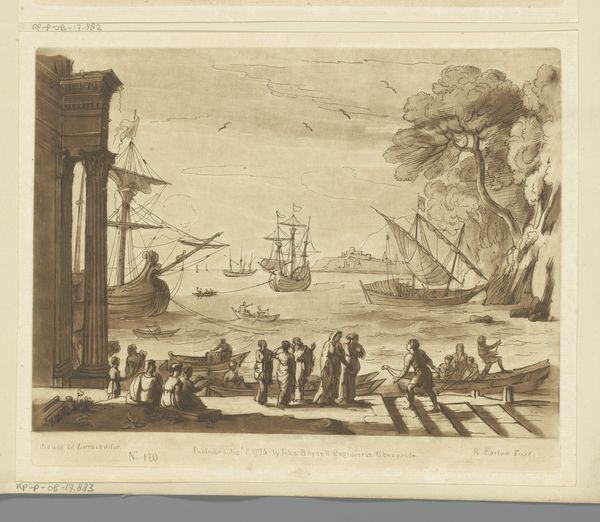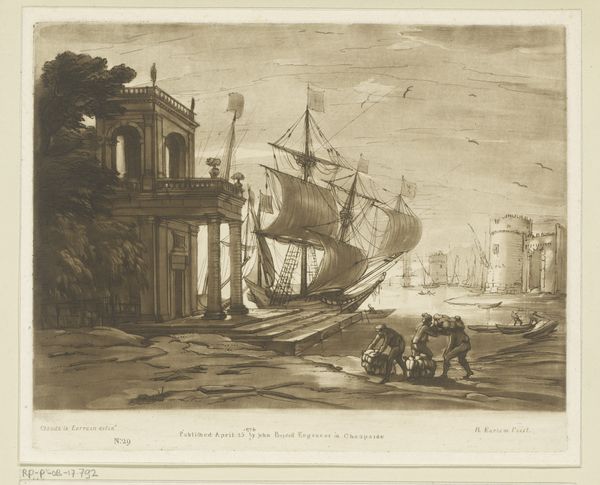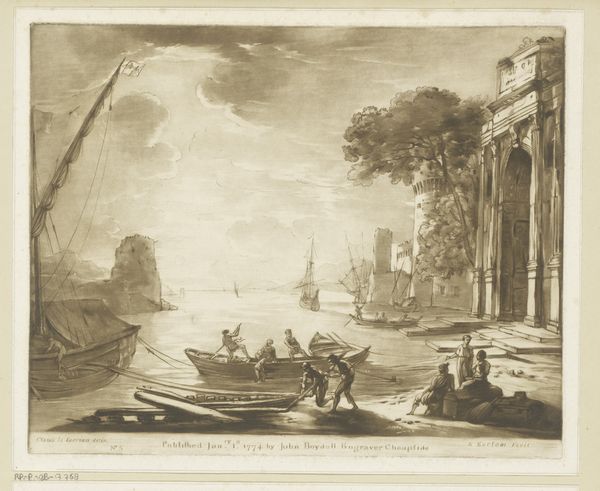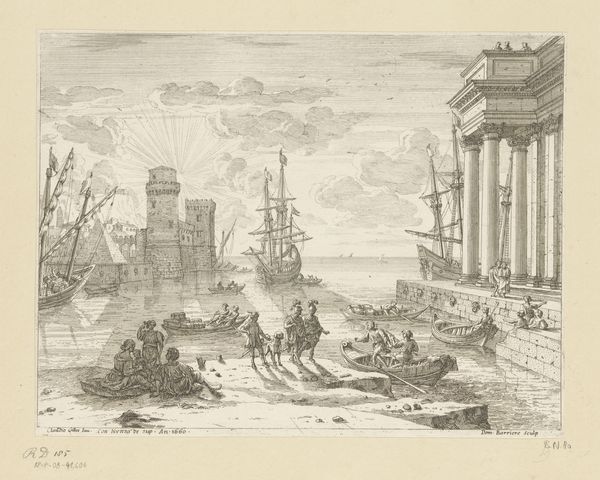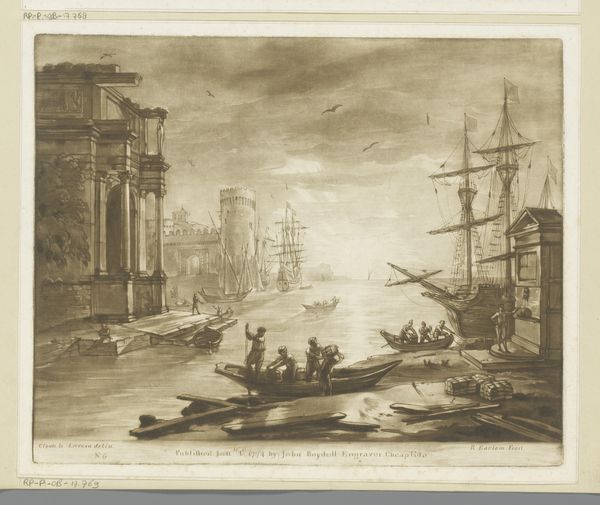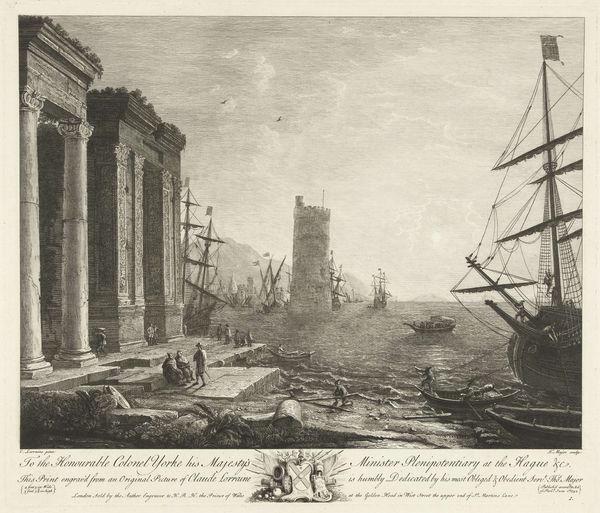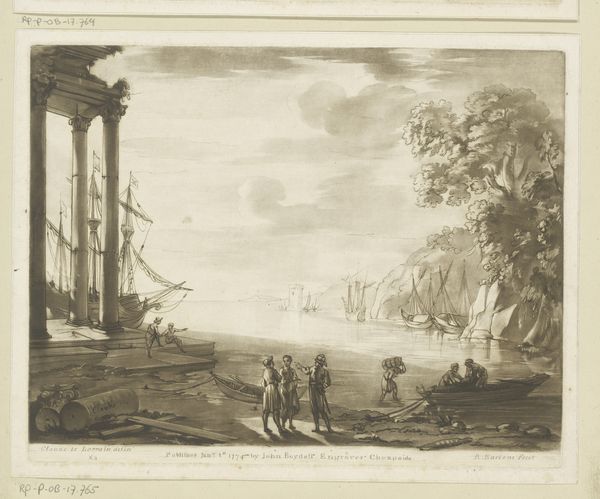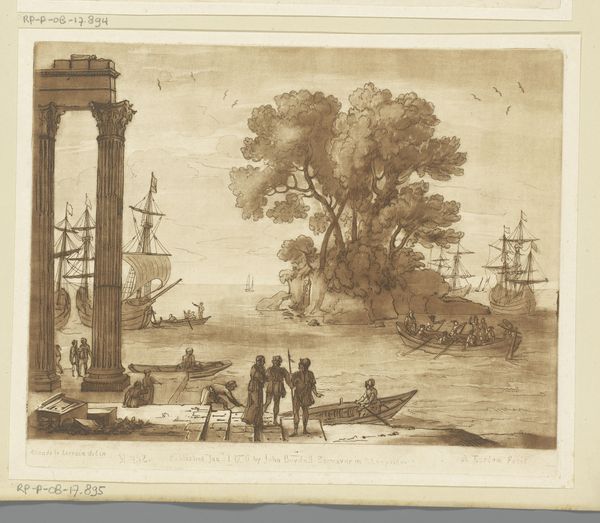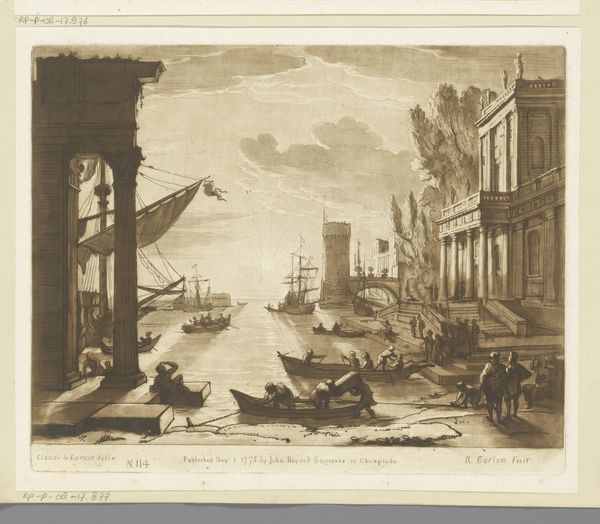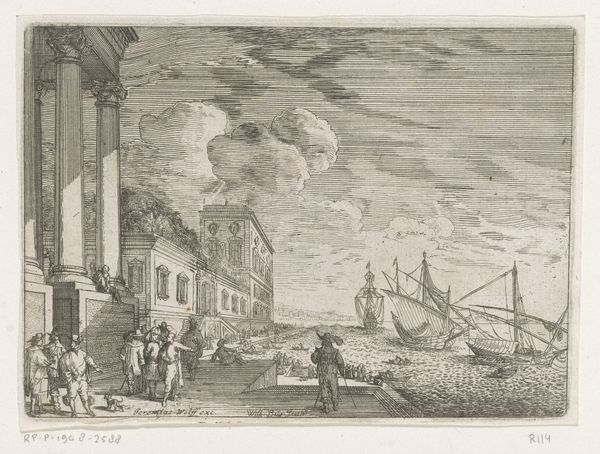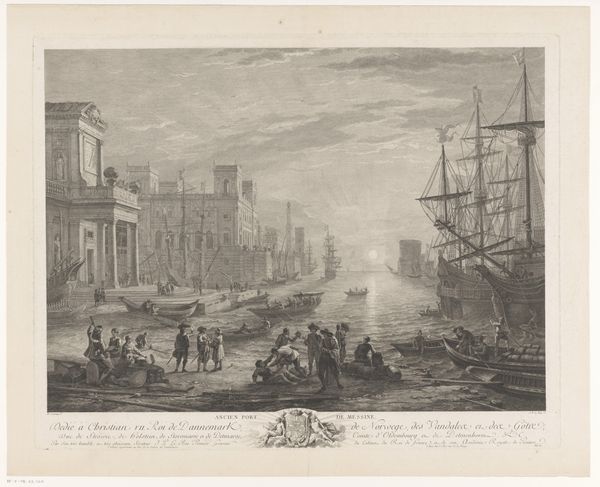
Gezicht op een zeehaven bij rotsachtige kust met Romeins bouwwerk Possibly 1774
0:00
0:00
Dimensions: height 201 mm, width 257 mm
Copyright: Rijks Museum: Open Domain
This seaport scene was created by Richard Earlom around 1774, using etching and engraving techniques. These processes involve coating a metal plate with a waxy ground, then drawing through it to expose the metal. Acid is then applied, biting into the metal where exposed. The plate is inked and printed, transferring the image to paper. Earlom's skilled manipulation of line and tone creates a vivid contrast between the architectural ruins on the left and the bustling activity on the right, and his combination of etching and engraving adds depth and texture to the print. The etching likely established the broad outlines and tonal areas, while the engraving added finer details and sharper lines. Prints like these were crucial for disseminating images widely, acting as a kind of proto-photography. They speak to the rise of a print culture, where images could be circulated and consumed on a mass scale. The labor-intensive nature of etching and engraving reflects a pre-industrial mode of production, yet also hints at the increasing commodification of art through printmaking. Understanding these processes and the social context is key to appreciating the layers of meaning embedded in the image.
Comments
No comments
Be the first to comment and join the conversation on the ultimate creative platform.
